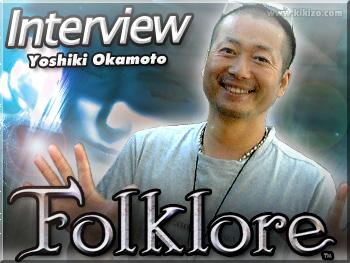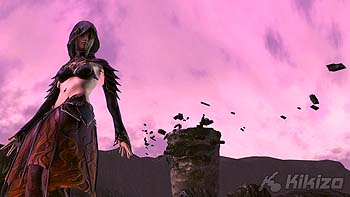Folklore: Yoshiki Okamoto Interview
We catch up with Okamoto to find out all about his new action-adventure steeped in Irish mythology.
Page: 1 2
It was less than six months ago that Game Republic founder (and Street Fighter II creator) Yoshiki Okamoto was last at Sony's 3Rooms brand space, located just a gourmet-coffee-cup throw away from London's delicious Spitalfields Market.

At that time he was helping launch the PlayStation 3 with a second game in the Genji series. Genji: Days of the Blade didn't win many fans, mostly because, while it all looked good, the camera made it hard to follow what was going on onscreen, leaving many to eschew the spectacle altogether and instead focus their attention on the tiny map in the corner of the screen.
It's mistakes like these that Okamoto is keen to avoid making again in his new game, the Irish mythology action-adventure Folklore.
"The camera is something I really wanted to change," Okamoto said during an interview with Kikizo at 3Rooms. He said that for Genji his team wanted to emphasize how well they had manage to coax early performance out of the fledgling console.
This time, for Folklore, a less hands-on but no less fast paced game out of a wholly separate studio in Japan, Okamoto has mercifully pulled back the camera, allowing us to not only see how colourful and vibrant the world is but also who the heck it is that is attacking us from behind.
In this particular case, that someone is a Fraxinus, a blue, bull-like folk or creature. There are more than 100 folks in Folklore and the majority of them are straight out of Irish lore. The researchers on the project ensconced themselves in Irish mythology so that their fantastic game would nevertheless bear a sense of authenticity, adding their own creations to the ranks only later in development.
But why would a studio based in Japan deliberately set a game in Ireland of all places? Well, why not. "Irish folklore is not as well known as Roman and Greek mythology, but these Irish characters and Irish folklore are actually quite famous," says Okamoto.
The story is centred on a bold blonde named Ellen. Orphaned at a young age, Ellen gets a message from her supposedly dead mother one day, calling her to a town known as Doolin in Ireland. She gets to Doolin just in time to see an unidentified woman sitting at the edge of a cliff before taking a dive down said precipice.
There's a second character too, a journalist named Keats. Keats is a writer for a third-rate occult magazine. He gets a call from a young girl asking him to go to Doolin. He promptly makes the trip only to find her dead when he gets there. With no girl to speak to, Keats takes up the case of the dead girl to try to find her killer.
For the most part the story in Folklore is split between the two characters. Ellen and Keats have separate opening chapters, coming together only for the last three of the 10-or-so chapters that make up the game.
Even though Okamoto insists it hasn't been, Folklore seems designed to capture the senses of Japanese gamers - particularly those of the type that made the Monster Hunter series so popular in Japan. In fact, the game was formerly known as Monster Kingdom: Unknown Realms, when it was shown at the Tokyo Game Show in 2006. Sony later dropped the link to PSP creature collection game Monster Kingdom Jewel Summoner.
But Okamoto points to the gameplay (see below), the game's focus on action and the its setting - including English voices in all versions of the game - as proof that Folklore has a much broader target audience. So what about that gameplay?
Page: 1 2










 Satoru Iwata Video Interview - the late Nintendo president spoke with Kikizo in 2004 as 'Nintendo Revolution' loomed.
Satoru Iwata Video Interview - the late Nintendo president spoke with Kikizo in 2004 as 'Nintendo Revolution' loomed. Kaz Hirai Video Interview - the first of Kikizo's interviews with the man who went on to become global head of Sony.
Kaz Hirai Video Interview - the first of Kikizo's interviews with the man who went on to become global head of Sony. Ed Fries Video Interview - one of Xbox's founders discusses an epic journey from Excel to Xbox.
Ed Fries Video Interview - one of Xbox's founders discusses an epic journey from Excel to Xbox. Yu Suzuki, the Kikizo Interview - we spend time with one of gaming's most revered creators.
Yu Suzuki, the Kikizo Interview - we spend time with one of gaming's most revered creators. Tetris - The Making of an Icon: Alexey Pajitnov and Henk Rogers reveal the fascinating story behind Tetris
Tetris - The Making of an Icon: Alexey Pajitnov and Henk Rogers reveal the fascinating story behind Tetris Rare founders, Chris and Tim Stamper - their only interview? Genuinely 'rare' sit down with founders of the legendary studio.
Rare founders, Chris and Tim Stamper - their only interview? Genuinely 'rare' sit down with founders of the legendary studio. The History of First-Person Shooters - a retrospective, from Maze War to Modern Warfare
The History of First-Person Shooters - a retrospective, from Maze War to Modern Warfare